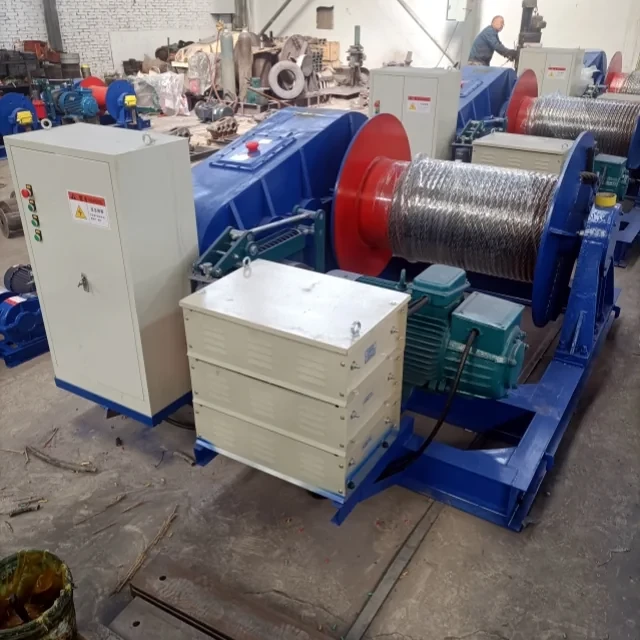Introduction
Every year, improper wire rope installation contributes to 15% of crane-related accidents (OSHA, 2023). Whether you're lifting construction materials or industrial equipment, compliant drum spooling isn't just regulatory—it's a lifesaving protocol. This guide breaks down the physics, standards, and field-tested techniques behind safe wire rope installation, helping you:
- Avoid catastrophic slippage through bottom-winding configurations
- Meet OSHA 1926.1413 and ISO 4309 retention loop requirements
- Detect early wear patterns with proactive monitoring
Wire Rope Dynamics in Hoisting Systems
The Physics Behind Bottom-Winding Configuration
Wire ropes transmit load forces through helical tension distribution. When spooled incorrectly (top-winding), the rope's side pressure against the flange increases by 70% (Lifting Equipment Engineers Association, 2022), accelerating wear.
Key Principles:
- Compression Stability: Bottom-winding allows each layer to nest securely, reducing radial movement.
- Fleet Angle Control: Maintain ≤1.5° angle to prevent crossover spooling—a leading cause of birdcaging.
Ever wondered why some ropes snap at the drum? Lateral forces from poor spooling create microscopic fractures invisible until failure.
Critical Role of Minimum Three Retention Loops
OSHA mandates three full wraps on the drum at all times. Here's why:
- Friction Backup: If the anchor fails, retention loops provide emergency grip.
- Torque Buffer: Absorbs sudden load shifts during multi-directional lifts.
Pro Tip: Mark the "minimum wraps" point with high-visibility paint on both rope and drum.
Safety Compliance Framework
OSHA/ISO Standards for Drum-Rope Interface
| Standard | Requirement | Penalty for Non-Compliance |
|---|---|---|
| OSHA 1926.1413 | Drum grooves must match rope diameter ±5% | $15,625 per violation |
| ISO 4309 | Discard ropes with >10% diameter reduction in any lay | Operational license suspension |
Case Example: A 2021 Texas refinery crane collapse was traced to oversized grooves causing rope slippage—a $2M OSHA fine followed.
Consequences of Uncovered Channel Passages
Exposed drum channels lead to:
- Rope "jumping" between grooves during dynamic lifts
- Accelerated wear at contact points (up to 3x faster)
Solution: Use Garlway's grooved drum winches with laser-calibrated channels matching common rope sizes (6mm-32mm).
Operational Best Practices
Fleet Angle Optimization Techniques
- Sheave Alignment: Position the lead sheave within 1 drum-width distance from the drum centerline.
- Layer Transition Protocol: Reverse spooling direction after each full layer to balance side loads.
Field Check: Run a plumb line from sheave to drum—deviation >2° requires realignment.
Wear Pattern Monitoring Protocols
- Weekly Inspection: Measure rope diameter at 3-meter intervals using caliper gauges.
- Monthly Deep Dive: Check for "valley breaks" in drum grooves with magnetic particle testing.
Did You Know? 80% of drum-related failures show visible scoring marks 6+ months before incidents.
Lessons from Industry Incidents
Case Study: Crane Collapse from Improper Spooling
Incident: A 2022 Miami high-rise project crane dropped a 12-ton beam due to:
- Top-winding during fast descent
- Two retention loops (vs. required three)
Outcome: $3.2M in damages and criminal negligence charges against the site supervisor.
Maintenance Checklist for Drum Groove Integrity
- Clean grooves with brass brushes (steel brushes damage surfaces).
- Lubricate with ISO VG 320 rope grease monthly.
- Document wear via groove profile templates (compare against OEM specs).
Conclusion: Building a Culture of Hoisting Safety
- Train teams on bottom-winding physics—not just compliance checkboxes.
- Invest in precision-engineered drums like Garlway's corrosion-resistant models to minimize groove wear.
- Adopt predictive maintenance by tracking fleet angles and diameter changes.
Final Thought: Safe hoisting isn't about passing inspections—it's about ensuring every worker returns home. When ropes spool correctly, they don't just lift loads; they sustain trust in your operations.
Related Products
- Portable Concrete Mixer Machine Equipment for Mixing Concrete
- Commercial Construction Mixer Machine for Soil Cement Mixing Concrete
- Hydraulic Concrete Mixer Machine Cement Mixing Equipment for Mixture Concrete
- Ready Mixer Machine for Construction Ready Mix Machinery
- HZS25 Best Cement Mixer for Quick Mix Concrete at Bunnings
Related Articles
- How Advanced Concrete Mixers Quantify Sustainability Beyond Waste Reduction
- How to Diagnose and Prevent Sensor Resistance Failures in Concrete Mixing Equipment
- How to Prevent Structural Failures and Explosions in Concrete Plants: A Safety-First Guide
- How to Prevent Cold-Weather Lubrication Failures in Concrete Mixing Stations
- How Concrete Mixers Boost Profitability, Quality, and Sustainability in Construction

















